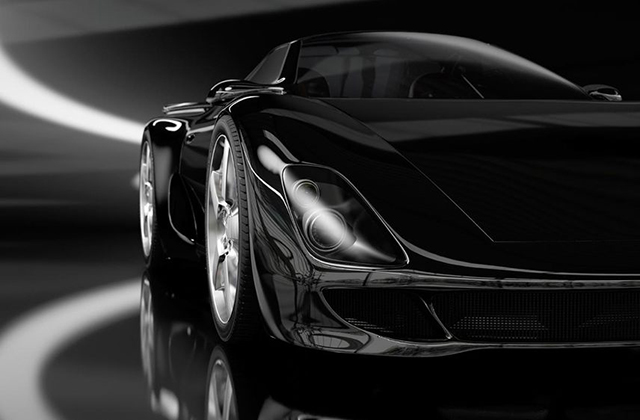All new DAS-6 PRO Plus v2 we believe is quite simply is the best random orbital dual action polisher available today. People often ask me how I make and keep my cars looking like a show car. “What wax do you use?” is the question that comes up most often. Unfortunately, it’s not quite that simple. If you want the perfect shine, you have to do a little work, and you have to work to keep it maintained. If your car’s paint is relatively new and in excellent condition, show car detailing to get the perfect shine will be far less work than with a car that’s five or more years old with heavy oxidation, paint scratches and other paint correction problems. Car detailing continues to evolve and become more involved all the time especially that we are now using a car polisher.
The process I’m about to explain came from years of experimenting with dozens of car polish and car wax products to discover what car detailing products produced the best results. As it happens, I stumbled on this process quite by accident.
Simply fooling around in the garage, I applied a Carnauba wax over a paint sealant on my Guards Red Porsche 944 Turbo. When I pulled the car out of the garage into the bright sunlight, I could not believe my eyes. The finish was noticeably deeper, richer and more vibrant. The paint had taken on a new depth, like it had a clear-coat finish.
After a few years of trying the process on a few dozen cars, I concluded that it works on all car finishes that are in good condition, but has the most dramatic effect on dark colors. With the ability to achieve consistent results, I decided I would give the process a name, The Perfect Shine.
In all fairness, I was not the first to discover “layering” car wax products. Autoglym and Klasse both beat me to it with their two-step systems. However, I do believe I was the first to discover and document applying a pure Carnauba wax over a sealant for the deepest, darkest shine possible.
Six Perfect Shine Requirements
The perfect shine comes when your car’s paint finish is in good condition, free of surface contamination, polished, glazed, protected and waxed. Let’s look at each of these requirements individually.
Tip-Top Paint Condition
For the first 12 to 18 months of a new car’s life, the paint is relatively oxidation-free and in good condition. If you maintain your new car’s paint with regular washing and protection, oxidation will remain minimal, and cleaning the paint will be a minor task.
At a minimum, you should wash your car once a week. If you don’t have time to wash weekly, try Quick Detailing.
Contamination-Free
As you drive your car, debris from the road (i.e., tar, oil, bugs, etc.) will lodge itself on your car’s paint. The longer this debris is allowed to remain, the more difficult it is to remove. This is just one reason that regular washing is so important. While outside, your car will also collect other contamination.
It seems like birds, bugs and neighborhood kids have a natural attraction to beautiful cars. Regardless, these contaminants must be removed; you can’t wax over them and expect to get a show car finish.
The easy way to remove the contamination is clay bar detailing.
Polished
Polishing is necessary to remove minor blemishes, including surface scratches, swirl marks, pitted areas (minor road stone nicks) and scuffs. When polished, the paint finish will feel perfectly smooth. Your hand and polishing towel will literally glide over the surface.
Feeling a perfectly polished car is a stimulating experience for most car nuts. There’s nothing quite like the polished fenders of a curvaceous Porsche, Ferrari, Viper or Corvette.
Glazed
Glaze is a term that’s grossly misused in detailing products. Glazes are paint treatments used to fill small surface scratches and swirl marks.
To a painter, glaze is the term used to describe the process of restoring full paint gloss. In The Perfect Shine, ultra-fine polishes are used to refine the paint finish to achieve or restore full gloss.
Protected
Paint is protected when it’s sealed from the elements. Synthetic paint sealants offer the best protection. They are easily five to ten times more durable (longer lasting) than Carnauba waxes.
They offer extended protection from the elements and create a super-slick surface. In The Perfect Shine process, the synthetic protection is an acrylic sealant called Klasse High Gloss Sealant Glaze.
In addition to providing excellent protection, Klasse Sealant Glaze also helps to hide or minimize the appearance of fine swirl marks. I have not found a polymer sealant that works in the Perfect Shine process. I will explain why later.
Waxed
Waxing is the final step of The Perfect Shine. We’re not talking just any wax here; we’re talking about a pure, natural Carnauba, like P21S Carnauba Wax. Pure carnauba waxes don’t have cleaning properties or synthetic compounds added. They are made from a blend of carnauba waxes, beeswax and natural oils.
A quality show car wax gives paint depth and warmth. I know, I know, it sounds like we’re talking about a fine wine or something. Just don’t underestimate the value of a great show car wax when it comes to the final results of your car’s finish.
Now that you know the six requirements for The Perfect Shine, I’ll share with you my personal tips that keep my cars turning heads. The first thing to know is that I treat my toys differently than my daily driver.
It’s very difficult to maintain a perfect shine on a daily driver, unless you only drive it a mile or two a day. Show cars (toys) are easier, because their job is to stay beautiful. Find out the car polisher that can make your car shine.
